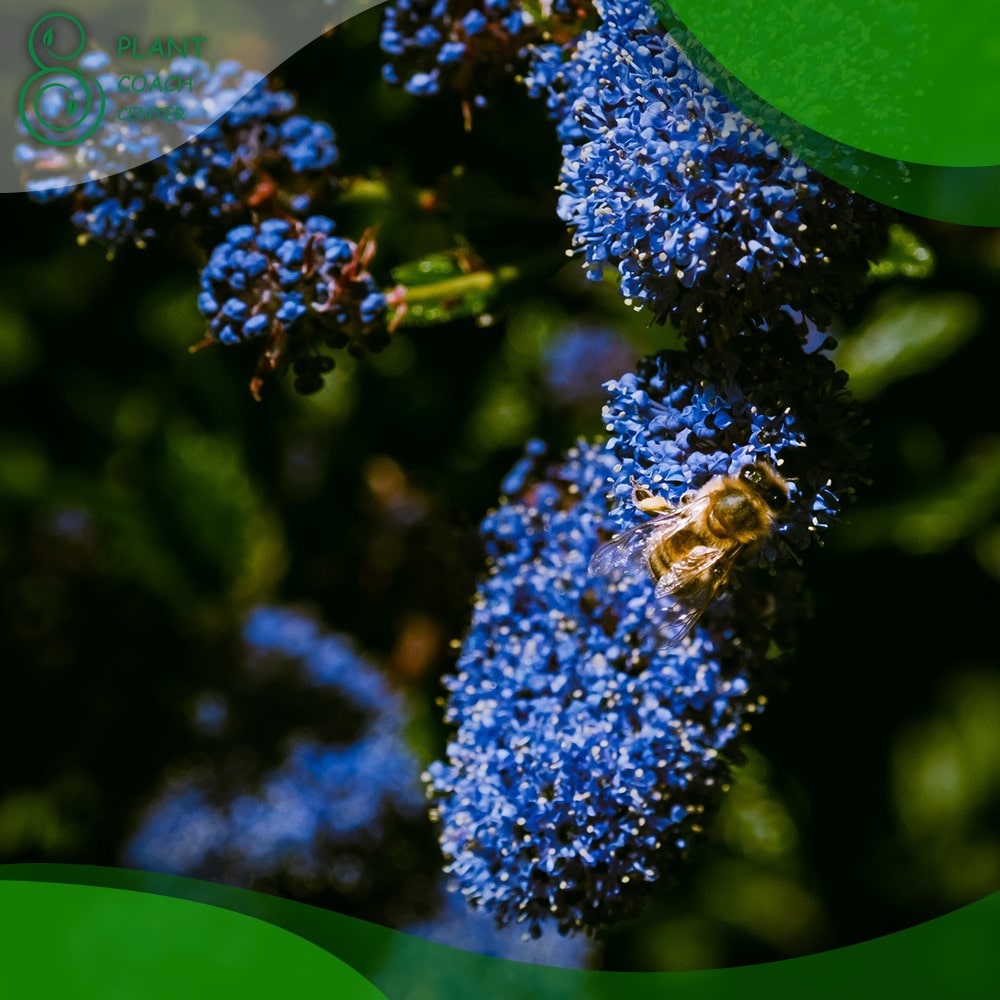Introduction to When to Prune Ceanothus
Welcome to “When to Prune Ceanothus.” In this article, we’ll explore the crucial art of timing in Ceanothus pruning. Understanding the when, why, and how of pruning is essential for the health and vitality of these beautiful shrubs. Pruning Ceanothus isn’t a one-size-fits-all task; it’s a delicate balance that requires careful consideration.
Proper timing ensures that you don’t inadvertently harm your plants or miss out on the full potential of their beauty. In the upcoming sections, we’ll delve into the nuances of when to prune, whether it’s in the rejuvenating spring, post-bloom period, or preparing for winter in the fall. Each season offers distinct advantages and considerations, all of which we’ll explore in detail. So, let’s get started on this journey to becoming a Ceanothus pruning expert!
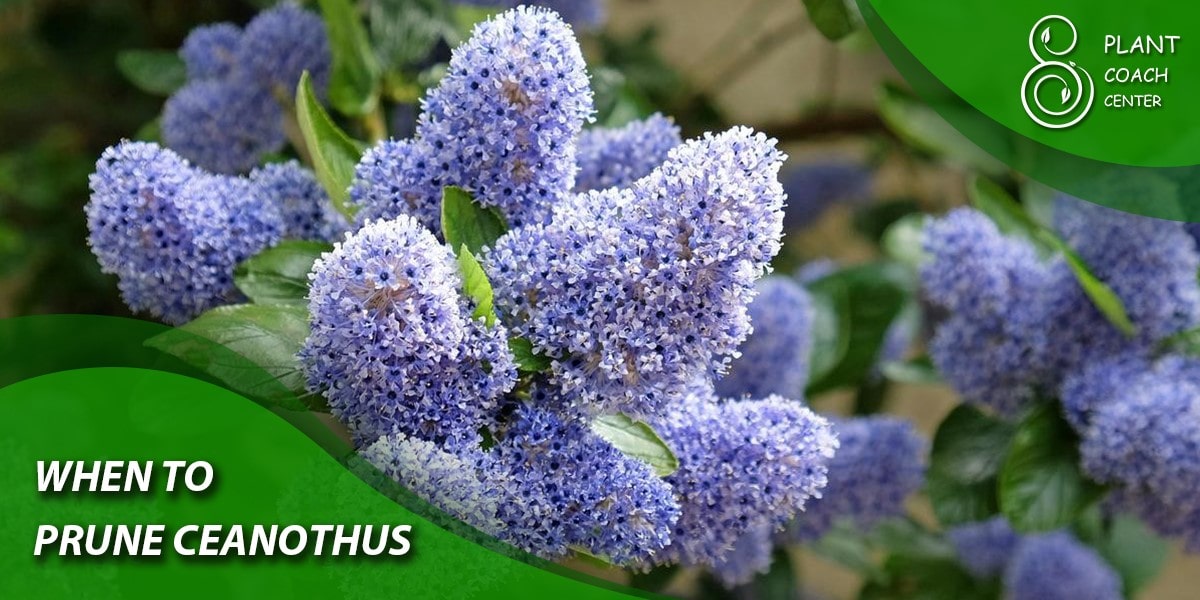
Spring Pruning
Perfect Timing for Spring Pruning
When the chill of winter begins to wane, and your Ceanothus awakens from its slumber, it’s time to consider spring pruning. Aim for this task just before the new growth starts, usually in late winter to early spring. Watch for the subtle signs – swollen buds and the first hints of green. This timing strikes the perfect balance, allowing the shrub to recover from pruning stress while harnessing the energy surge of the growing season.
Benefits of Spring Pruning:
Spring pruning is like a wake-up call for your Ceanothus. It stimulates the production of fresh shoots and vibrant foliage. By removing dead or damaged branches, you encourage the plant to channel its resources into healthy growth. This not only enhances its appearance but also bolsters its resistance to pests and diseases. Furthermore, it aids in maintaining an attractive, well-shaped shrub throughout the year.
Techniques for Effective Spring Pruning:
To make the most of spring pruning, start by assessing the overall health of your Ceanothus. Identify dead or weak branches and remove them cleanly, cutting just above a healthy bud or lateral branch. Avoid heavy pruning during this season, as it may diminish the floral display later in the year.
Instead, focus on selective, light pruning to maintain the desired shape. Always use sharp, clean pruning shears to make precise cuts, and remember to step back occasionally to ensure you’re achieving the desired form.
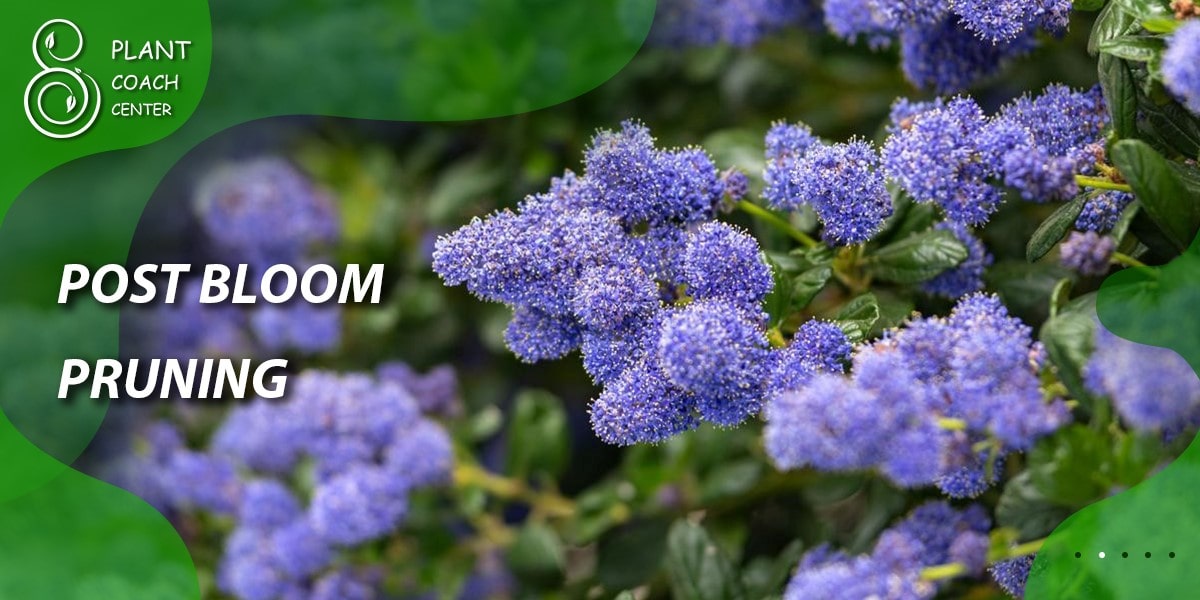
Post-Bloom Pruning
Pruning After the First Bloom
Timing is everything when it comes to coaxing a second bloom from your Ceanothus. Post-bloom pruning should be done shortly after the first flowering, typically in early to mid-summer. You’ll notice the vibrant display of blossoms starting to fade, and this is your cue. However, don’t wait too long; pruning too late may interfere with next year’s bud formation. Strike the balance by acting promptly but allowing some time for the plant to recover and set new growth.
Encouraging a Second Bloom
The primary goal of post-bloom pruning is to tidy up and encourage a fresh wave of flowers. Begin by meticulously deadheading – removing spent flowers down to just above a healthy bud or lateral branch. This prevents seed formation and redirects the plant’s energy into new growth and, hopefully, a second round of blooms. Take care not to cut too far into the healthy growth, as this can be counterproductive.
Tips for Post-Bloom Pruning
Maintaining your Ceanothus’s appearance while promoting a second bloom is an art. After deadheading, step back and assess the overall shape. If your shrub appears uneven or overgrown, consider some light, selective pruning. However, exercise restraint; avoid heavy pruning during this period, as it may hinder the plant’s ability to recover and produce new blossoms.
Water your Ceanothus adequately after pruning to support its post-trim recovery. This meticulous care and attention post-bloom will reward you with a refreshed and vibrant Ceanothus for the season ahead.
Fall Pruning
Timing for Fall Pruning
As the days grow shorter and temperatures begin to drop, your Ceanothus enters a period of dormancy. This is the ideal time for fall pruning. Aim to prune in late autumn, after the plant has shed its leaves, typically from late October to early December. Performing this task too early may stimulate new growth, which can be vulnerable to frost damage.
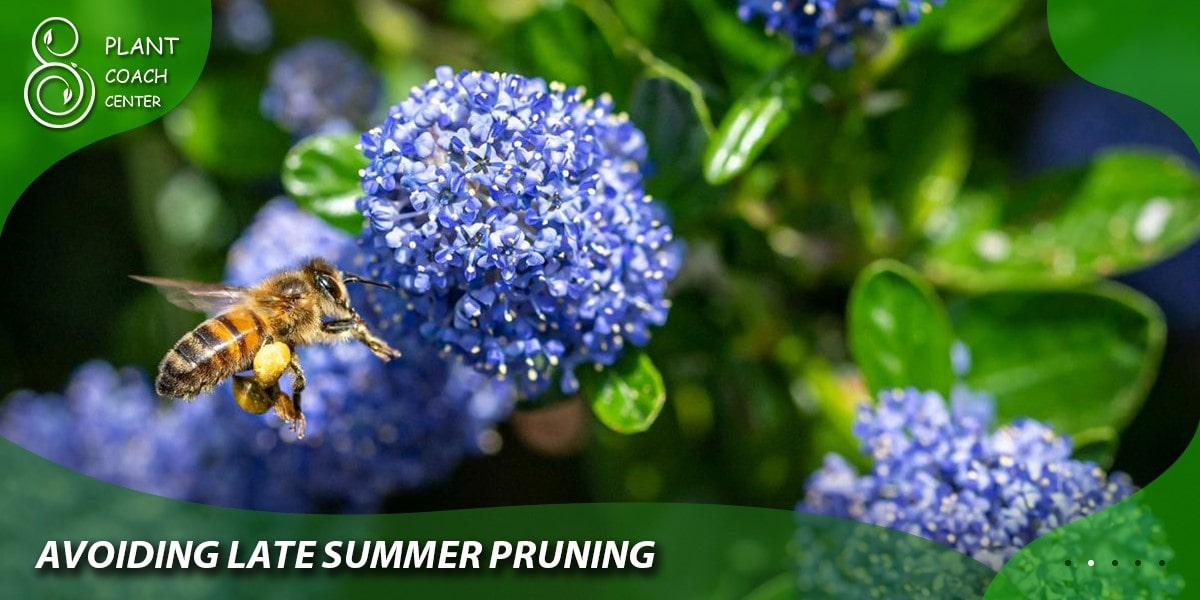
Preparing for Winter
Fall pruning serves a dual purpose: it prepares your Ceanothus for the harsh winter months while ensuring it’s primed for vigorous growth come spring. Begin by removing dead or diseased branches, as these can invite pests and disease during the winter. Next, focus on shaping the shrub, trimming back any straggly or wayward growth. Keep in mind that your goal is not to induce heavy growth but to maintain structure and health.
Protecting from Winter Damage
A well-pruned Ceanothus is better equipped to withstand winter’s chill. However, avoid hard pruning or shearing in the fall, as this can leave the plant vulnerable. Instead, concentrate on tidying up and removing potential weak points. Mulching around the base of the shrub can provide additional insulation against freezing temperatures. By pruning with care in the fall, you’ll safeguard your Ceanothus and set the stage for a thriving spring display.
Avoiding Late Summer Pruning
Risks of Late Summer Pruning
Late summer pruning might seem like a convenient option, but it carries potential risks for your Ceanothus. During this period, your shrub is gearing up for dormancy, making it less resilient to the stress of pruning. The heat of summer can compound the stress, leaving your plant vulnerable to sunburn and dehydration. Moreover, late pruning can disrupt the plant’s ability to harden off properly for winter, potentially resulting in cold damage and diminished vigor.
Reasons to Wait for Fall or Spring
Late summer pruning may not be the wisest choice. Waiting until fall or spring is generally more beneficial for your Ceanothus. In the fall, the plant is naturally shedding leaves and preparing for dormancy, making it an optimal time for pruning without interfering with active growth. Spring, on the other hand, provides the added advantage of harnessing the plant’s natural energy surge for recovery and new growth. These seasons strike the right balance for maintaining the health and vitality of your Ceanothus.

Exceptions for Late Summer Pruning
While late summer pruning should generally be avoided, there are exceptions. If you encounter safety hazards or disease outbreaks that urgently require pruning, proceed with caution. In such cases, prioritize the removal of damaged or diseased branches while minimizing stress to the plant. Keep in mind that late summer pruning should only be a last resort, and any cuts should be made judiciously to avoid compromising the shrub’s overall health.
Ceanothus Varieties and Their Pruning Needs
Understanding Ceanothus Varieties
Ceanothus encompasses a diverse family of species and cultivars, each with its unique characteristics and pruning requirements. Understanding these distinctions is vital for effective care. Some Ceanothus varieties are compact and shrubby, while others can grow into sizable trees. Additionally, they may vary in flower color, foliage type, and hardiness. This section will provide insights into these differences to help you tailor your pruning approach.
Pruning for Different Varieties
As you delve into the world of Ceanothus, you’ll discover that each variety demands a specific approach. Some, like the low-growing groundcovers, benefit from more frequent and precise pruning to maintain their compact form. Others, such as tree-like Ceanothus, require less frequent but strategic pruning to shape them and remove deadwood. We’ll explore the nuances of pruning timelines and techniques for various Ceanothus varieties, ensuring you have the knowledge to care for your specific plant effectively.
Seasonal Pruning Calendar
A Year-Round Pruning Guide
Imagine a calendar tailored to the needs of your Ceanothus. Picture it as a roadmap that guides you through the seasons, ensuring your pruning efforts are perfectly timed for success. In early spring, as winter’s grip loosens, your calendar marks the ideal moment to rejuvenate your Ceanothus. Vivid green buds emerging? That’s your cue.
A little further down the calendar, in early to mid-summer, post-bloom pruning becomes your focus, breathing life into your Ceanothus for another burst of blossoms. As autumn approaches, the calendar whispers that it’s time to prepare for winter, to strengthen your plant against the cold. With the right seasonal cues, this calendar transforms your pruning routine into a well-orchestrated performance, resulting in healthier, more vibrant Ceanothus.
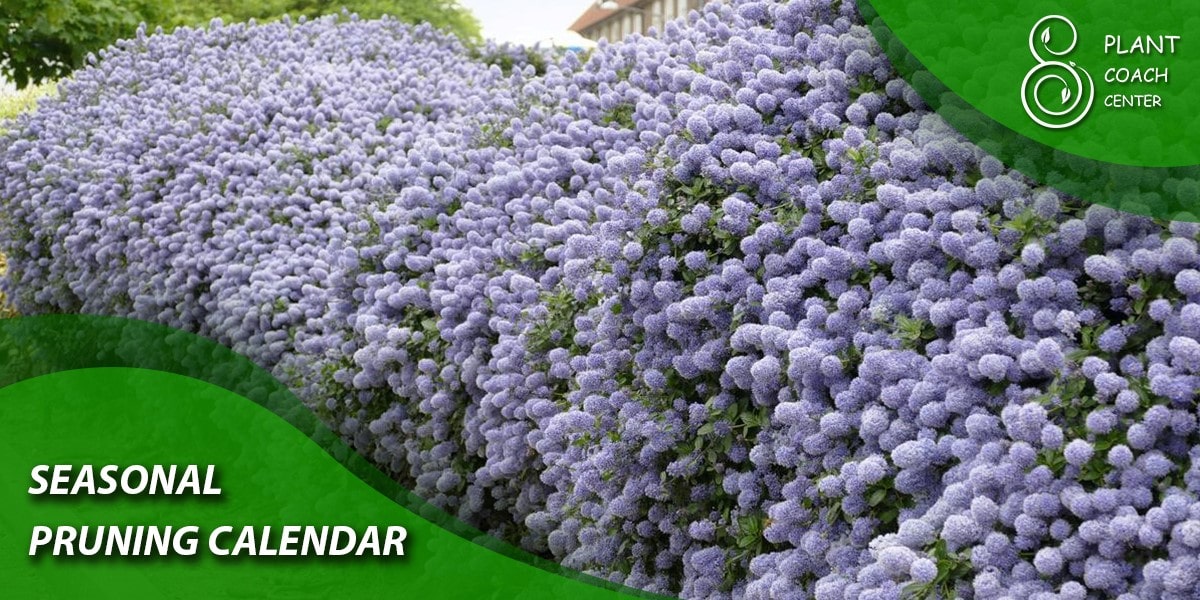
Specific Recommendations for Each Season
In January and February, when winter’s grip holds firm, your Ceanothus rests. It’s a time for observation, where you study the shrub’s condition, identifying dead or damaged branches. March and April usher in the awakening of your Ceanothus. As the first signs of new growth appear, seize this moment for spring pruning. Remove the weak and wayward, shaping your shrub with precision.
May and June witness the radiant bloom of your Ceanothus. After this floral spectacle, embrace post-bloom pruning, snipping spent flowers and stems. July and August, however, are times of caution. Late summer pruning should be avoided, as it may stress your shrub during the scorching heat.
Come September and October, as autumn paints the landscape, your Ceanothus prepares for dormancy. Here, fall pruning takes center stage. Clip away deadwood and maintain the structure, ensuring your plant weathers winter with grace.
November and December grant your Ceanothus a well-deserved rest. As the year comes full circle, your calendar reminds you that successful pruning isn’t just about timing; it’s about dancing in harmony with the seasons, nurturing your Ceanothus through its annual cycle.
Common Mistakes to Avoid When Pruning Ceanothus
Pruning Too Late in the Fall:
Delaying fall pruning until late in the season can stimulate new growth that won’t have time to harden off before winter, potentially leading to frost damage.
Over-Pruning and Cutting into Healthy Growth:
Excessive pruning, such as shearing or cutting too deeply into healthy branches, can hinder the shrub’s development and vitality.
Neglecting to Remove Dead or Diseased Growth Promptly:
Failure to promptly remove dead or diseased branches can provide a breeding ground for pests and diseases, putting the overall health of your Ceanothus at risk.
Failing to Adjust Pruning Timing Based on Local Climate Conditions:
Pruning should align with local climate conditions; be mindful of late spring frosts or mild winters, as they can impact the timing of your pruning.
Using Dull or Improper Pruning Tools:
Inadequate or dull pruning tools can result in ragged cuts that damage the plant. Invest in quality, sharp tools designed for woody shrubs.
Not Monitoring the Plant’s Health and Growth Before Pruning:
Evaluate the health and shape of your Ceanothus before pruning. Avoid unnecessary pruning if the shrub is thriving and well-formed.
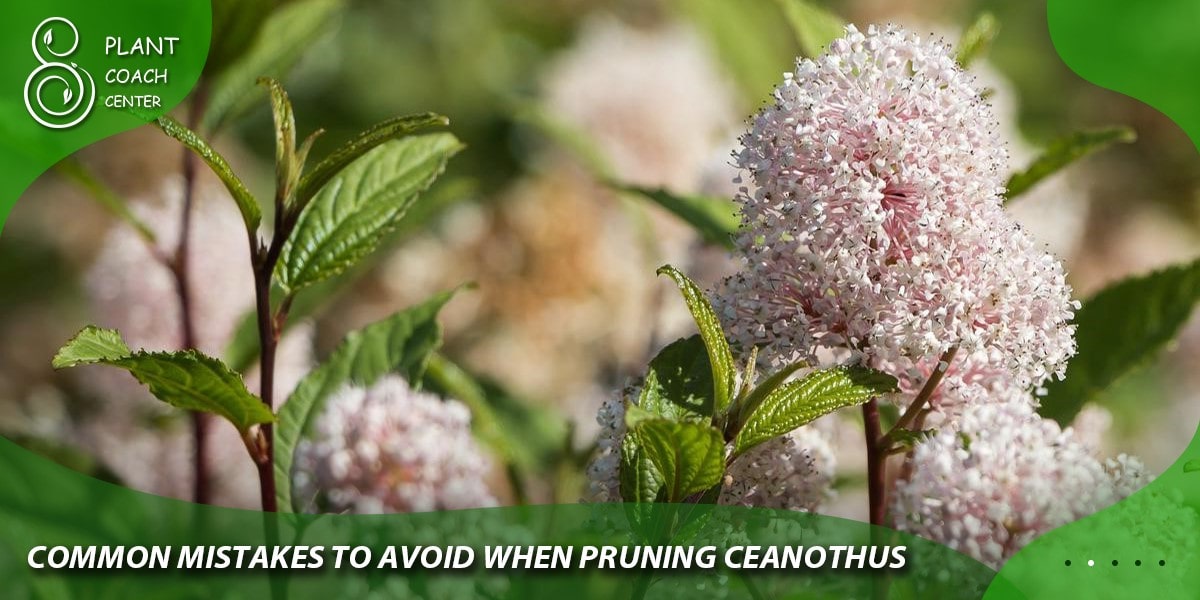
Ignoring the Importance of Timing, Leading to Reduced Plant Vitality:
Disregarding the recommended pruning schedule for your specific Ceanothus variety can diminish its vitality, reduce blooms, and potentially cause long-term harm.
By sidestepping these common errors and approaching Ceanothus pruning thoughtfully, you can help your shrub thrive and enhance the beauty of your garden.
conclusion
In conclusion, timing is the linchpin of successful Ceanothus pruning. As we recap our journey through the seasons in plantcoachcente , we’ve learned that each moment is a vital cue for ensuring the health and vitality of these remarkable shrubs. From the rejuvenating embrace of spring to the post-bloom revival, and the careful preparations for winter, timing has proven to be the key to unlocking the full potential of Ceanothus beauty.
It is paramount that you heed these lessons to avoid the common mistakes that can hinder your shrub’s well-being. By staying vigilant and pruning with purpose, you can nurture your Ceanothus towards robust growth and a vibrant display of blooms. In the grand tapestry of Ceanothus care, timing weaves the threads that hold the plant’s health and vitality together.
May your pruning endeavors always be guided by the wisdom of when, and may your Ceanothus flourish as a testament to the significance of timing in the art of gardening.
FAQs
When is the best time to prune Ceanothus in the spring?
Prune in late winter to early spring, just before new growth emerges.
Can I prune my Ceanothus in late summer?
It's best to avoid late summer pruning to prevent stress to the shrub.
What should I do after Ceanothus blooms in summer?
Perform post-bloom pruning to remove spent flowers and stems.
How do I protect Ceanothus from winter damage?
Prune in late autumn to prepare the plant for winter and minimize cold damage.
What tools should I use for Ceanothus pruning?
High-quality pruning shears, loppers, and saws designed for woody shrubs are recommended.
Can I prune Ceanothus if it looks healthy?
Prune with purpose and avoid unnecessary cutting; a healthy shrub may require minimal pruning.


